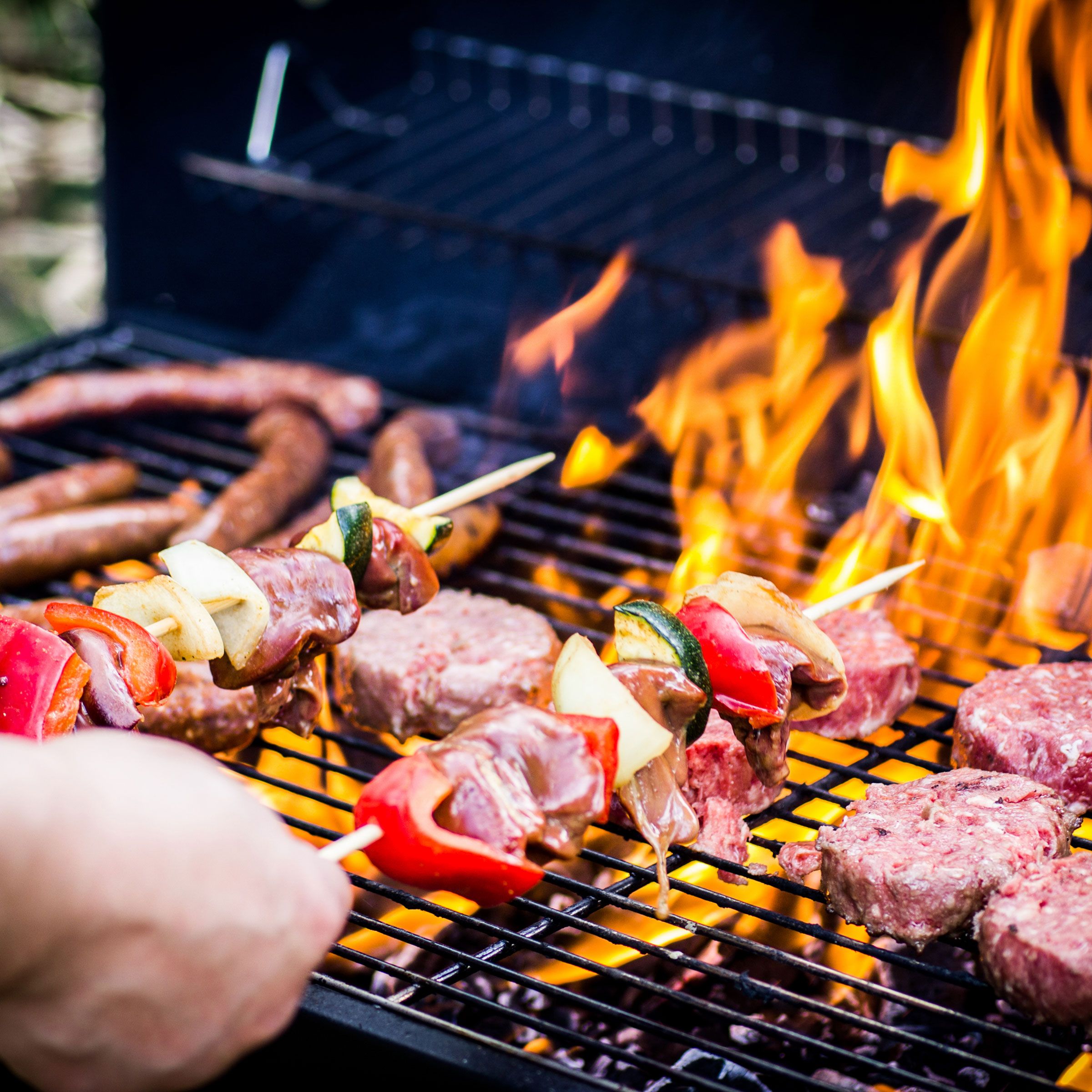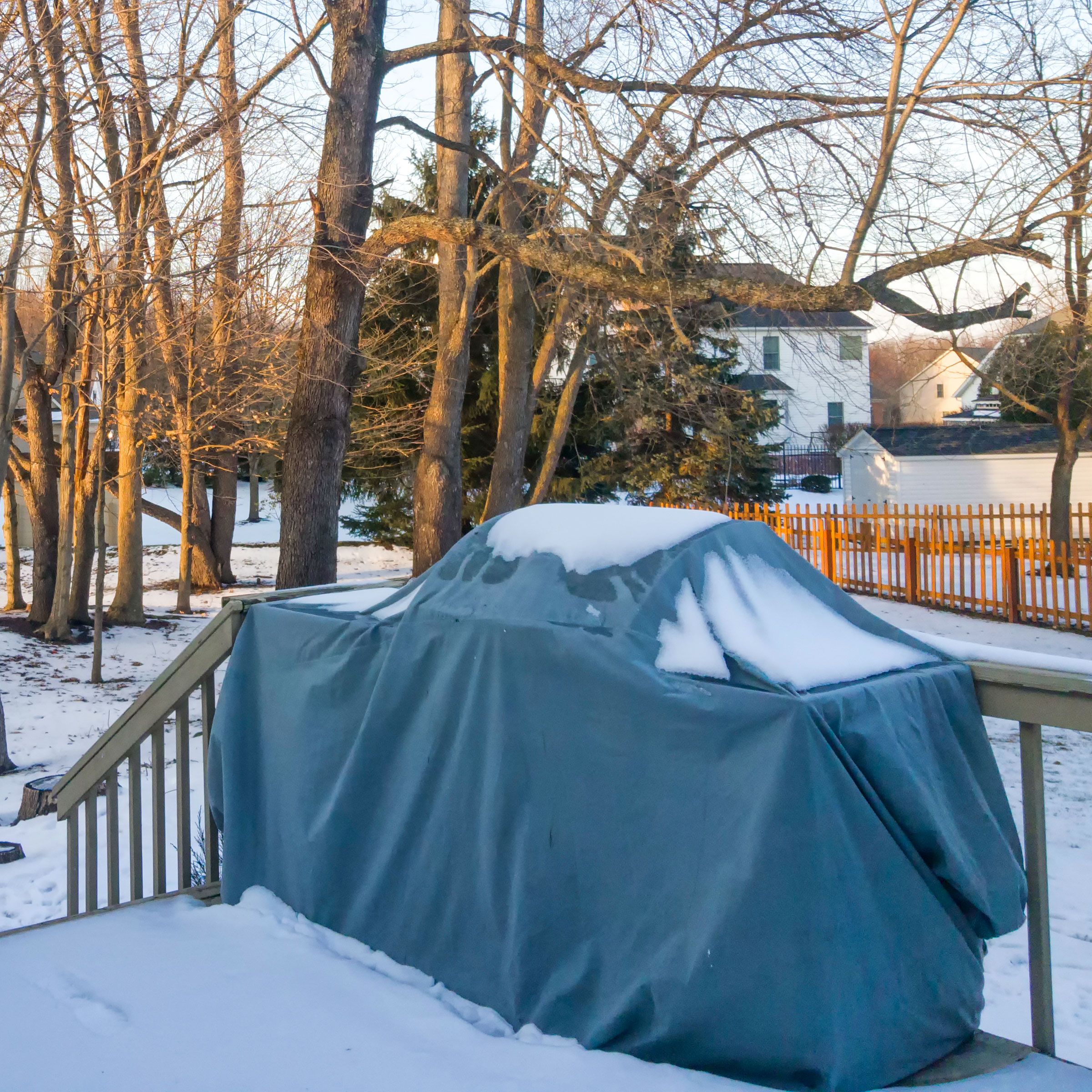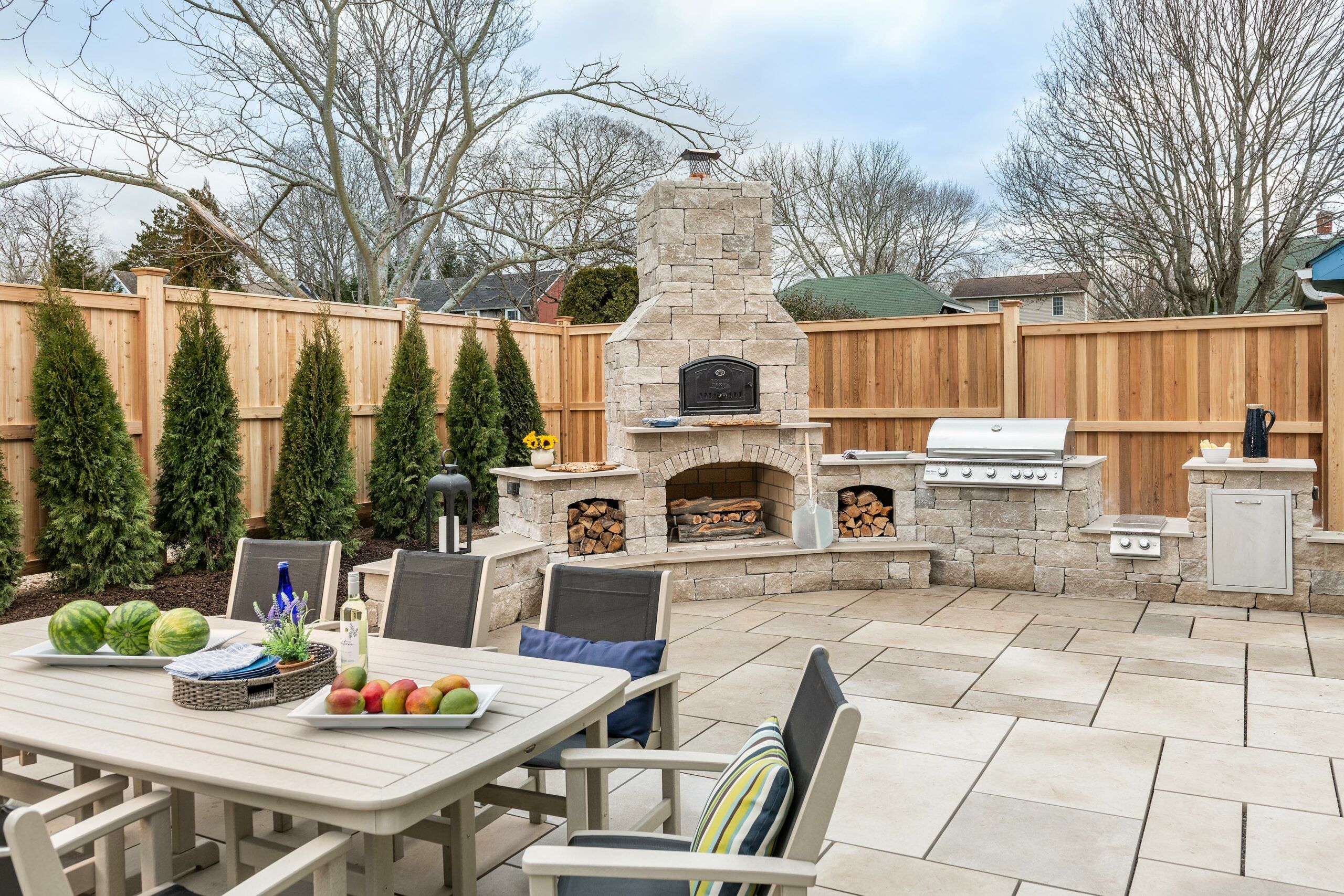Firing up the grill marks the official start of summer for many homeowners. However, a poorly maintained grill can quickly dampen the festive mood with uneven cooking, excessive smoke, failure to ignite, or even exposure to harmful bacteria. Regular maintenance is key to keeping the burners firing properly, heat distributed evenly, and the grill safe. Here’s a This Old House primer on keeping your grill in shape.
Tools and Supplies Needed for Grill Maintenance
To keep your grill in tip-top shape, gather these essential tools and supplies:
- Bucket of warm water
- Dish soap or mild detergent
- Protective gloves
- Putty knife or scraper
- Replacement parts (as needed)
- Sponges or cleaning cloths
- Stainless steel cleaner (for stainless steel grills)
- Steel wool
- Wire brush
Inspecting Your Grill: What To Look For
“At least twice per year, you need to pull the grill apart to get inside and take a closer look at it,” says barbecue and grilling expert Derrick Riches. Here’s what to focus on during your grill check-ups.
Chassis
Start by inspecting the grill’s body for any signs of rust or damage. Pay close attention to welded joints and connections with pop rivets that are prone to corrosion. Scrub rust off with a stiff wire brush or coarse steel wool, apply a rust-inhibiting primer, and paint the exterior with rust-resistant metal paint.
Check and tighten the fasteners for a stable base. If you need to replace damaged grill appendages—wheels, handles, etc.—contact the manufacturer. You can also refer to the CLA Grills and Service website or the Appliance Factory Parts website.
Burners
Riches stresses that cleaning burners keep the unit working at its best. Burner ports can fill with grease and close up, leading to hot and cold spots on the grill. Inspect the burners for any signs of corrosion, cracks, or blockages. For gas grills, pay attention to the flame’s color. A healthy flame should be primarily blue with yellow tips. Yellow flames can indicate a problem with gas pressure or burner alignment.
Grease Traps
Locate the grease traps, typically trays or disposable aluminum cups, under the firebox. Check these for excessive buildup or damage.
Step-by-Step Grill Cleaning Process
Cleaning your grill thoroughly helps keep it in top condition. Follow these steps for a deep clean.
Cleaning the Grates
First, clean the grill grates:
- Preheat the grill for 15 minutes to loosen debris.
- Turn off the grill and let it cool slightly.
- Use a wire brush to scrub the grates, removing food particles and grease. Depending on the grate material, you can try using baking soda, vinegar, or a degreaser. Check the manufacturer’s instructions for your grill.
- For stubborn residue, soak the grates in warm, soapy water before scrubbing.
- Rinse the grates thoroughly and dry them completely.
Tackling the Burners
Now, move on to the burners. While the grill is cold, use a stainless steel wire brush or flexible pipe cleaner to remove the gunk from a traditional gas burner. The flames should be distributed evenly throughout the burner after a good cleaning. Brush off any ash that accumulates on infrared grills, and be sure to keep the glass clean.
Infrared grill manufacturers suggest using Bar Keepers Friend, a nonabrasive cleaner, to remove any deposits. Running the grill for 10 minutes on high after cooking also helps keep the ports free of buildup.
Here are the general cleaning guidelines:
- Remove the burners according to your grill’s manual.
- Use a wire brush or pipe cleaner to clear any blockages in the burner ports. Do not use water.
- Wipe down the burners with a cloth to remove debris.
- Inspect for any damage or wear that might require replacement.
- Reinstall the burners, making sure they’re properly aligned.
Addressing the Grease Traps
Keep these traps clean and drained because large pools of grease can ignite. Burners combined with a grease fire will exceed the maximum amount of heat the grill can handle.
Be careful when cleaning your grease traps:
- Remove the grease traps carefully to avoid spills.
- Dispose of any accumulated grease properly.
- Wash the traps with warm, soapy water.
- Rinse thoroughly and dry before replacing.
- Consider lining the traps with aluminum foil for easier future cleaning.
Cleaning the Drip Pan
Remove the drip pan and dispose of any residue. Wash it with warm, soapy water and use a putty knife to scrape off tough grime. Rinse and dry thoroughly before reinserting.
Wiping Down the Lid
Wipe down the interior and exterior of the grill lid with a damp sponge. Use a mild detergent if needed, but avoid abrasive cleaners that can damage the surface. Dry the lid completely to prevent rust and other damage.
Cleaning Control Knobs
Remove control knobs (if possible) and wash them with warm, soapy water. Use a soft brush to clean around the areas where knobs attach. Rinse and dry the knobs before placing them back on the grill.
Replacing Worn Hoses
Replacing a worn or damaged fuel line is easy once you locate the problem. Manufacturers suggest coating everything—from the tank to the venturi tubes, which connect the control valve to the burner—with soapy water.
For a neat job, Riches says to first use a basting brush to apply the soap solution. Then, turn the grill on. Any bubbles that appear on coated areas indicate escaping gas, which you can fix by replacing the hose or O-ring. The gap in the venturi tubes mixes gas with air en route to the burner and can easily clog with debris or insects. Riches recommends wrapping the tubes with an aluminum screen to let air in and keep bugs out.
Maintaining Different Types of Grills

Different grill types require specific maintenance approaches.
Gas Grill
Regularly check the fuel line and connections on your gas grill. Coat these areas with soapy water and turn on the gas to check for bubbles, which indicate leaks. Clean the venturi tubes connecting the control valve to the burner, and consider wrapping them with an aluminum screen to prevent insect infestations.
Charcoal Grill
For charcoal grills, focus on removing ash after each use to prevent moisture buildup and potential rusting. Clean the grates thoroughly and oil them lightly to prevent food from sticking. Check that the vents open and close properly for optimal temperature control.
Electric Grill
Electric grills require careful cleaning to avoid damaging electrical components. Always unplug the grill before cleaning. Wipe down heating elements with a damp cloth and clean removable parts separately. Make sure all parts are completely dry before reassembling to prevent electrical hazards.
Smokers
Smokers tend to accumulate a lot of creosote over extended use. This tar-like substance can affect flavor and pose a fire hazard. Clean this buildup using a plastic putty knife and a mild cleaning gel that’s safe to use on smoker surfaces. Ensure vents and chimneys are clear of blockages to ensure proper airflow.
Troubleshooting Common Grill Issues
Address these frequent problems to keep your grill running smoothly.
Uneven Heating
Uneven heating is often due to clogged burner ports or misaligned burners. Clean the burners thoroughly and check their alignment. For charcoal grills, make sure the coals are evenly distributed for consistent heat.
Flame Color Problems
There are a few reasons gas flames turn from their normal blue with yellow tips to completely yellow. The most common is inadequate gas pressure from the tank. Since propane expands at freezing temperatures, the pressure bladder in the regulator (a round disk attached to the gas line) can freeze into place and limit the flow of gas to the burner.
If you have a yellow flame, try this remedy:
- Turn the tank off and turn off the grill’s control valves.
- Disconnect the tank, then open and close the control valves.
- Reconnect the tank and slowly turn the gas back on to check the flame’s color.
Pressurized propane can cause the burner ports to widen over time, which is another cause of a yellow flame. As a result, too much gas escapes. Riches recommends inspecting the burners and replacing them if they are misshapen or cracked. Once the burners are cleaned, light the grill to ensure that all flames are blue and similar in height.
Ignition Issues
For grills with electronic ignition, check the battery and connections. Clean any corrosion on the ignitor or electrodes. If the problem persists, you may need to replace the ignition system.
Rust
Rust is another common issue, especially for grills exposed to the elements. To combat rust, periodically inspect all grill parts for signs of corrosion. As an early intervention, apply a rust-inhibiting primer to affected areas. For safety reasons, we recommend replacing parts that are significantly rusted.
Temperature Control Issues
If you notice you have issues with temperature control, check the following:
- Gas grills: Examine the regulator and ensure the flow of gas is consistent.
- Charcoal grills: Adjust the vents and check for blockages.
- Electric grills: Confirm the thermostat is working and make sure electrical connections are secure.
Preventive Maintenance Tips

Implement these practices to keep your grill in top condition:
- Rotate grill components: Rotating certain components, such as grill grates, can help maintain even wear. This practice ensures that no single part deteriorates prematurely.
- Use a grill cover: Choose a cover with a cloth inner lining to wick away moisture and prevent rust. Avoid plastic sheets, which can trap humidity and promote corrosion.
- Perform regular inspections: Before and after each use, look for any signs of wear, damage, or grease buildup. Address minor issues promptly to prevent them from becoming major problems.
- Season your grates: After cleaning, apply a thin layer of high-heat cooking oil to the grates and heat the grill for about 15 minutes. This can improve non-stick properties and prevent rust.
- Store your grill properly: If possible, store the grill in a garage or shed to protect it from harsh winter conditions. If outdoor storage is your only option during colder months, use a high-quality, weather-resistant cover.
When To Replace Grill Parts
Knowing when to replace your grill’s components is vital for safety and efficiency. Use the table below to understand signs it’s time for replacement:
| Component | When To Replace |
|---|---|
| Burners | Replace burners if they show signs of significant corrosion, have large holes or cracks, can’t be unclogged, or produce uneven flames even after thorough cleaning. |
| Grates | Replace grates when they show deep rust, warping, or extensive damage that affects cooking performance or food safety. |
| Hoses | If you notice cracks, brittleness, or kinks, or if the hose fails the soapy water test for leaks, replace it immediately. You should replace your hose every three to five years. |
| Igniters | Replace igniters immediately if you struggle to ignite your grill consistently, even after addressing battery and connection issues. In some cases, you may need to replace the entire ignition system. |
Occasionally check the overall structural stability of your grill. If you notice that the frame or essential components like the firebox are weakening, consider either reinforced repairs or a complete replacement, depending on the severity.
Seasonal Grill Maintenance
Tailor your maintenance routine to the seasons to ensure your grill is ready for use year-round.
Spring Preparation
As grilling season begins, perform a thorough cleaning and inspection. Check all connections, clean or replace the grease trap, and ensure all parts are in good working order.
Midsummer Check-Up
During peak grilling season, clean your grill more frequently. Pay special attention to grease buildup and burner performance.
Fall Winterizing
Before storing your grill for winter, give it a deep clean. Empty the grease trap, clean all surfaces, and ensure the grill is completely dry to prevent rust. Store in a dry place or use a high-quality cover if leaving outdoors.
Year-Round Care
Regardless of the season, ongoing care is essential. Regular grill cleaning can prevent buildup and maintain smooth operation.

